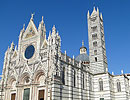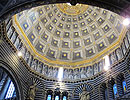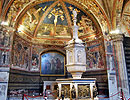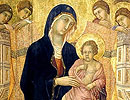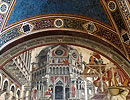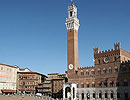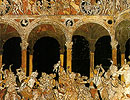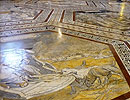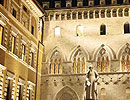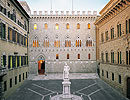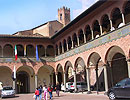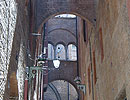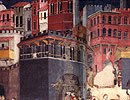Siena
It would seem that the personnel at UNESCO also thought so, naming Siena a World Heritage Site in 1995, having appreciated that this extraordinary Medieval city has preserved its characteristics and qualities for so many centuries.
More specifically, it was defined as “a masterpiece resulting from inventiveness and dedication in the way architecture is designed and embedded into the urban structure.”
Saena Julia was what the Emperor Augustus originally named Siena when it was founded as a Roman colony – although the Etruscans settled it long before the Romans.
Oddly, it was during times of war with Florence that the city experienced its best years; that is because it was precisely in those years that great artists had the opportunity to realize important works.
Think Duccio di Boninsegna, Simone Martini and the Lorenzetti brothers, the masters of the Sienese school. Siena was adorned with marvelous new monuments during the period – these included its Duomo, the Palazzo Pubblico and the Torre (Tower) del Mangia.
Behind these new constructions was the Council of Nine, the Republic of Siena’s primary judicial body, rather prolific towards the mid-14th Century. When the plague struck the city in 1348, killing three-fifths of the population, Siena’s government also suffered the consequences.
Piazza del Campo, the city’s main piazza, where the Palio takes place: bustling with bars and restaurants, it presses tourists to keep their gaze averted skyward in order to admire the fantastic monuments that share the space.
Piazza del Campo traces a trapezoidal form and slowly descends from edge to center, eventually running into the Fonte Gaia, a copy of Jacopo della Quercia’s 15th-Century original.
Also fronting the Piazza are imposing buildings the likes of Palazzo Sansedoni and Palazzo Pubblico. Peering at the Piazza from a height of 345 ft is the Torre del Mangia that dates back to the 1440s; the Tower is equal in measure to the Duomo's Bell Tower. Together the two perfectly symbolize the balance between earthly and divine power. At the Tower’s feet stands the Chapel of the Virgin, a marble tabernacle with exquisite sculptures inserted into its Gothic niches. Yes, all this lies in just one piazza.
Yet, it is not Piazza del Campo alone that makes the city: Siena in in its whole is a succession of Churches – like that of San Domenico and of Santa Maria dei Servi – of narrow streets full of stores and artisan workshops offering local products and Siena’s famous treats to taste - including cantuccini accompanied by a glass of Vin Santo.
Among the tiny lanes and the ample central piazza, Siena’s true heart beats – a young, though ancient city, monumental in all its vivacity.
Siena and the Palio
The Sienese passion for the Palio transcends any notion of mere athletic competition. The event is so strongly-intertwined with citizen life here that it is hard to fully comprehend for those not born in Siena.
Siena is divided into 17 residential quarters (contrade), ten of which participate in the race, by way of a horse chosen at random. An Historical Procession takes place before the Palio, with more than 600 people in costume taking part. The Palio is a race (bareback) three times around the Piazza del Campo (annually, July 2nd and August 16th).
Siena is entirely pedestrian; if arriving by car, park in one of the vast parking lots located outside the city gates (porte).
